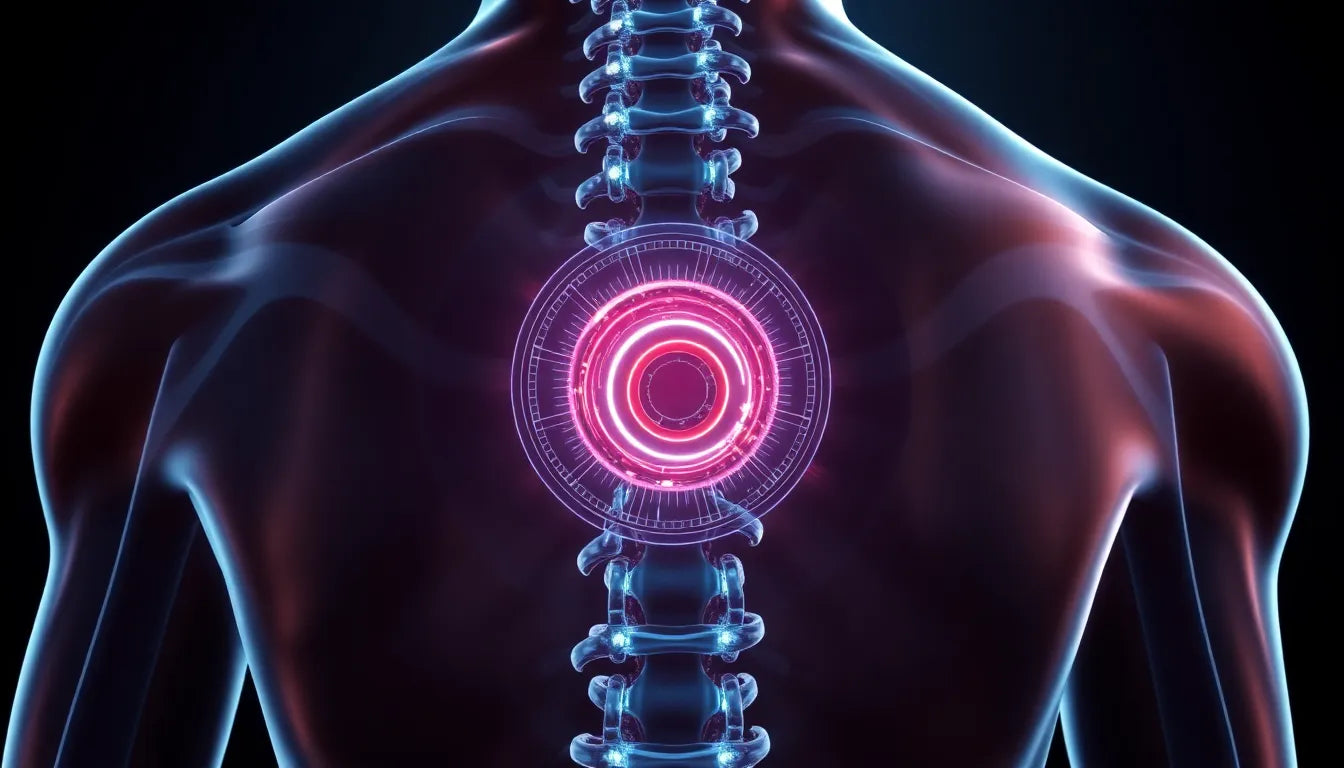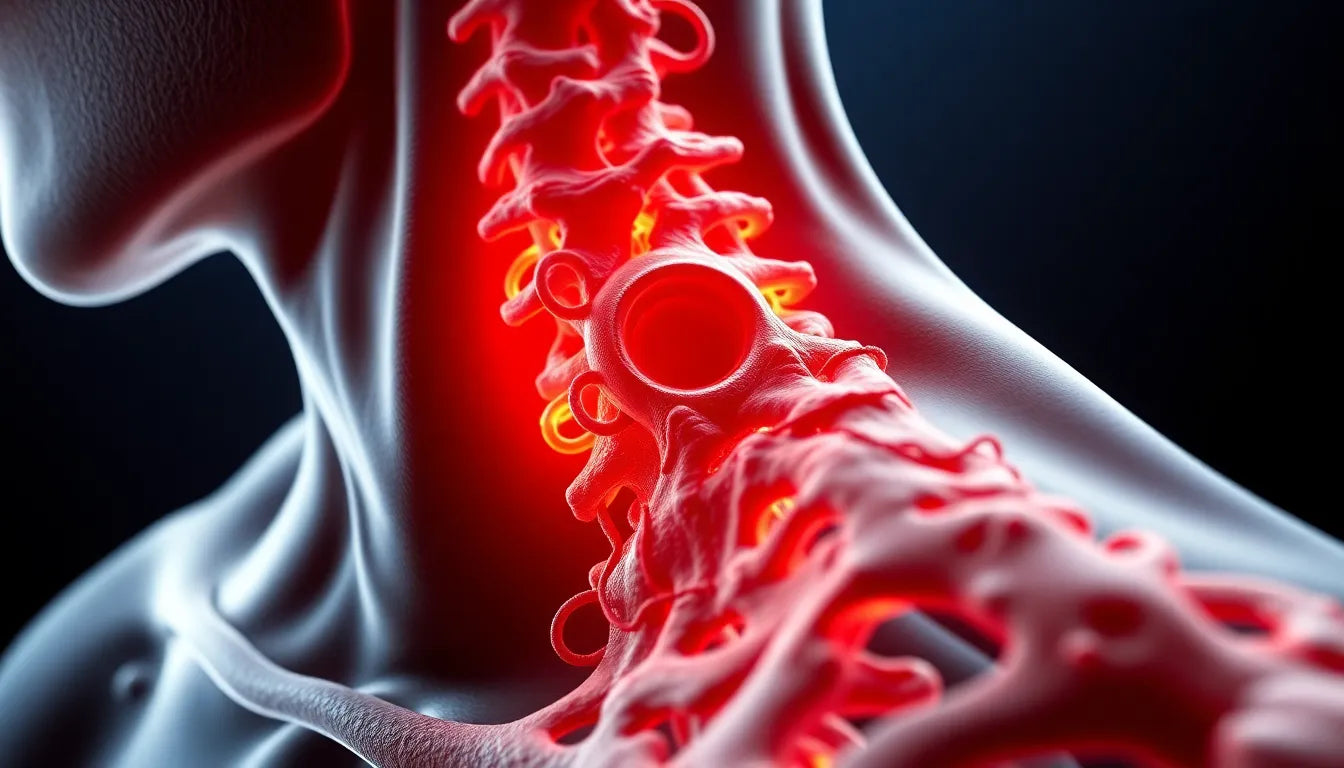A herniated disc can be a debilitating condition, affecting your ability to perform everyday tasks with ease and comfort. Understanding what a herniated disc is and recognizing its symptoms is the first step towards effective management. A herniated disc occurs when the soft center of a spinal disc pushes through a crack in the tougher exterior casing. This condition often results in pain, numbness, or weakness in the limbs, depending on where the disc is located. It's a common ailment, particularly among adults aged 30 to 50, and can significantly impact one's quality of life.
Understanding herniated discs
Living with a herniated disc can be challenging, as it often causes discomfort and limits mobility. The symptoms can range from mild to severe and might include sharp pain, tingling sensations, or muscle weakness. These symptoms can interfere with daily activities, from sitting at a desk to lifting objects, making it essential to find effective ways to manage the pain and improve functionality. With the prevalence of this condition, many individuals are seeking alternative treatment methods that can be performed at home, offering a natural solution to manage pain and promote healing without the need for invasive medical procedures.
The importance of self-care
At-home treatments for herniated discs are gaining popularity because they offer several benefits, including convenience and the ability to tailor methods to individual needs. Embracing a self-care routine can empower you to take control of your health and alleviate discomfort. A holistic approach, which integrates various treatment methods, can be particularly effective in managing herniated disc pain. This approach may include a combination of physical therapies, lifestyle adjustments, and natural remedies, all of which work together to provide relief and improve overall well-being.
By focusing on self-care, you can address the root causes of pain and discomfort associated with a herniated disc. This proactive approach not only helps in alleviating current symptoms but also plays a crucial role in preventing future flare-ups. As more people discover the benefits of treating their herniated disc at home, the interest in natural and holistic remedies continues to grow, offering hope and relief to those affected by this common condition.
Effective home treatments for herniated disc relief
When dealing with a herniated disc, employing at-home treatments can be a practical and effective strategy to alleviate pain and enhance mobility. One of the most recommended methods is the use of heat and cold therapy. Alternating between these therapies can provide significant relief. Cold therapy is beneficial for reducing inflammation and numbing sharp pain by constricting blood vessels, which can help to minimize swelling. Applying an ice pack wrapped in a cloth for 15-20 minutes, three to four times a day, is typically advised.
On the other hand, heat therapy works by improving blood flow to the affected area, which helps relax tight muscles and promotes healing. A warm towel or a heating pad can be applied for similar durations, ensuring that the skin is protected from direct heat. This method not only eases stiffness but also enhances flexibility, which is crucial for those dealing with a herniated disc.
Incorporating exercise and physical activity
Engaging in regular, low-impact exercises is another cornerstone of at-home treatment for a herniated disc. Activities like walking, stationary biking, and water therapy are excellent choices as they help maintain cardiovascular health without putting excessive strain on the back. These exercises promote circulation and can aid in reducing inflammation around the affected disc.
Additionally, incorporating core-strengthening exercises such as yoga and Pilates can be beneficial. These activities focus on building the muscles that support the spine, thereby enhancing stability and reducing the risk of further injury. It is essential to start slowly and gradually increase the intensity of these exercises to prevent exacerbating the condition. Listening to your body and avoiding movements that trigger pain is crucial for a safe and effective exercise routine.
Self-massage techniques for muscle relief
Self-massage can be a powerful tool in relieving tension and discomfort associated with a herniated disc. Techniques that involve applying gentle, sustained pressure can help release muscle knots and improve circulation. Focusing on trigger points with firm pressure for a few seconds can alleviate tension in the muscles surrounding the spine.
Using tools such as lacrosse balls can be particularly effective for reaching difficult areas. By placing the ball between your back and a wall or floor, you can apply pressure and roll gently to target specific spots. This method not only reduces muscle tightness but also promotes relaxation and comfort.
Optimizing posture and sleep positions
Adjusting your posture and sleep positions can significantly impact your recovery from a herniated disc. Maintaining good posture throughout the day, especially when sitting, can alleviate pressure on the spine. Ergonomic chairs and lumbar support cushions can provide additional comfort and support.
When it comes to sleep, the right positioning can make a substantial difference. For back sleepers, placing a pillow under the knees can help maintain the natural curve of the spine. Side sleepers should consider placing a pillow between their knees to ensure proper spinal alignment. These adjustments can reduce strain on the back and promote a more restful sleep, aiding in the healing process.
By integrating these home treatments into your daily routine, you can effectively manage the symptoms of a herniated disc and improve your quality of life. These natural and holistic approaches offer a viable alternative to more invasive treatments, empowering you to take control of your health and well-being.
Natural anti-inflammatory approaches
For those seeking natural relief from herniated disc pain, incorporating anti-inflammatory supplements can be a beneficial strategy. Turmeric, known for its active compound curcumin, is celebrated for its anti-inflammatory properties. Similarly, omega-3 fatty acids found in fish oil can help reduce inflammation and promote joint health. Supplements like glucosamine and chondroitin are also popular for their potential to support cartilage health and reduce pain.
Hydrotherapy, particularly through Epsom salt baths, is another effective method to alleviate discomfort. The magnesium in Epsom salts can help relax muscles and reduce swelling, offering a soothing experience that complements other treatment methods. Regularly soaking in a warm Epsom salt bath can enhance relaxation and provide relief from the persistent pain associated with a herniated disc.
Holistic and preventative strategies
Integrating alternative therapies and lifestyle modifications can play a crucial role in managing herniated disc symptoms and preventing future issues. Acupuncture, for example, is an ancient practice that may help reduce pain by stimulating specific points on the body to promote natural healing processes. Additionally, chiropractic care can offer spinal adjustments that improve alignment and reduce nerve pressure.
Long-term management of a herniated disc involves adopting ergonomic adaptations both at home and at work. Ensuring that your workspace is set up to support good posture can prevent unnecessary strain on your back. This includes using ergonomic chairs, adjustable desks, and ensuring your computer screen is at eye level. These adjustments not only help in managing current symptoms but also play a significant role in preventing future occurrences.
Frequently asked questions
What are the first signs of a herniated disc?
Initial symptoms often include pain, numbness, or weakness in the limbs, depending on the affected area of the spine. These symptoms can vary in intensity and may worsen with specific movements or activities.
When should I see a doctor for a herniated disc?
It is advisable to consult a healthcare professional if home treatments do not alleviate the pain or if you experience significant weakness, loss of function, or symptoms that interfere with daily activities.
Can lifestyle changes really help with herniated disc pain?
Yes, incorporating regular exercise, ergonomic adjustments, and a nutritious diet can significantly help reduce symptoms and prevent recurrence. These changes support overall spinal health and enhance recovery.
Are there specific products that can aid in at-home treatment?
Yes, products like ergonomic pillows, heating pads, and massage tools can provide additional support and relief. These items help maintain proper posture and offer comfort during recovery.
Is it safe to continue exercising with a herniated disc?
Low-impact exercises are generally safe and beneficial for maintaining mobility. However, it is important to listen to your body and avoid activities that exacerbate pain. Consulting with a physical therapist can provide guidance on suitable exercises.
By embracing these natural and holistic approaches, you can manage herniated disc symptoms effectively at home, empowering yourself with the tools needed for long-term relief and prevention.
Sources
- Spine-Health. "5 Little-Known Tips for Lumbar Herniated Disc Pain Relief."
- WebMD. "Herniated Disk Treatment, Remedies, and Medications."
- HealthPartners Blog. "7 Ways to Treat a Herniated Disc Naturally."
- Kaiser Permanente. "Home Treatment for Herniated Disc Pain."
- Regen Orthosport. "Natural Remedies: Herniated Disc Treatment Without Surgery."
- Barricaid's Blog. "Natural Remedies to Shrink Your Herniated Disc."
- Sciatica.com. "11 Treatment Options for Herniated Discs."


















